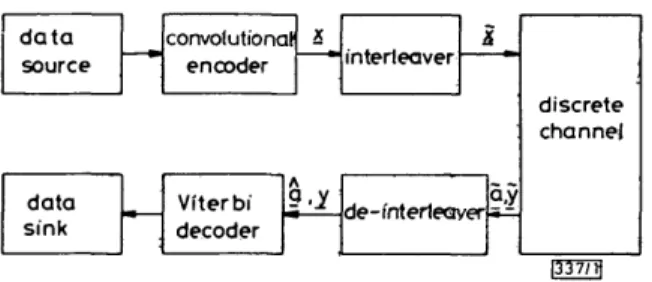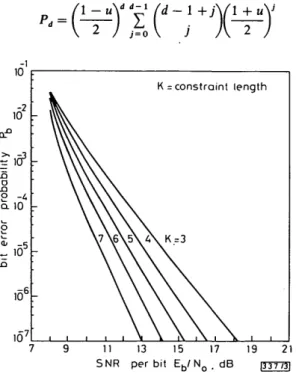action times and, hence, higher gains may be achieved at these wavelengths.
Acknowledgments: The author wishes to thank the Directors of STL for permission to publish this letter. The work was partly supported by the UK Department of Trade & Industry under the JOERS programme.
K. C. BYRON 3rd October 1986
STC Technology Limited London Road
Harlow, Essex CM 17 9NA, United Kingdom
References
1 DESURVIRE, E., PAPUCHON, M., POCHOLLE, J. P., RAFFY, J., a n d
OSTROWSKY, D. B.: 'High gain optical amplification of laser diode signal by Raman scattering in single mode fibres', Electron. Lett., 1983,19, pp.751-753
2 AOKI, Y., KISHIDA, s., WASHIO, K., and MINEMURA, K.: 'Bit error rate evaluation of optical signals amplified via stimulated Raman process in an optical fibre', ibid., 1985, 21, pp. 191-193
3 HEGARTY, J., OLSSEN, N. A., and GOLDNER, L.: 'CW pumped Raman preamplifier in a 45km-long fibre transmission system operating at 1-5 /im and 1 Gbit/s', ibid., 1985, 21, pp. 290-292
4 NAKAZAWA, M., TOKUDA, M., NEGISHI, Y., and UCHIDA, N.: 'Active transmission line: light amplification by backward-stimulated Raman scattering in polarization maintaining optical fibre', J. Opt.
Soc. Am, 1984, Bl, pp. 80-85
5 BYRON, K. c : 'Raman amplification in optical fibres in the wave-length range 106 to 1-36 /mi'. Proceedings of 1984 European con-ference on optics, optical systems and applications, Paper L.5
6 LIN, C , COHEN, L. G., STOLEN, R., TASKER, C. W., a n d FRENCH, W. G.:
'Near infra-red sources in the 1-1-3/im region by efficient stimu-lated Raman emission in glass fibres', Opt. Commun., 1977, 20, pp. 426-428
7 AUYEUNG, J., and YARIV, A.: 'Spontaneous and stimulated Raman scattering in long low loss fibers', IEEE J. Quantum Electron., 1978, QE-14, pp. 347-352
8 POCHELLE, J. p., RAFFY, J., PAPUCHON, M., and DESURVIRE, E.: 'Raman and four photon mixing amplification in single mode fibers', Opt.
Eng., 1985, 24, pp. 600-608
9 POOLE, s. B., PAYNE, D. N., and FERMANN, M. E. : 'Fabrication of low-loss optical fibres containing rare-earth ions', Electron. Lett., 1985, 21, pp.737-738
CONVOLUTIONAL CODING FOR BPSK SYSTEM WITH ORTHOGONAL SOUNDING TONE ON FAST RAYLEIGH FADING
CHANNEL
Indexing terms: Codes, Digital communication systems
For combating the fast Rayleigh fading usually encountered in mobile communication channels, convolutional coding and Viterbi decoding together with interleaving and the BPSK system using an orthogonal sounding tone are con-sidered. The bit error probability performance of the system is analysed, and numerical results for the systems with rate-! optimum codes of constraint lengths K = 3 to 7 are also provided.
Introduction: Digital communications over land mobile chan-nels usually suffer from fast Rayleigh fading. The envelope of the mobile radio signal is Rayleigh-distributed and the phase of the received signal is uniformly distributed from 0 to 2n. Moreover, the time derivative of the random phase varies with time in a random manner (random FM), depending on both the vehicle speed and the carrier frequency. Phase decorrela-tion caused by random FM prohibits the use of a coherent receiver and creates a large error floor for a noncoherent receiver. To remove random FM, a BPSK system with an orthogonal sounding tone has been proposed by Yokoyama.1 The performance analysis of such a system was further simpli-fied by Davarian.2 Analysis indicates that the bit error rate
performance of the system is worse by 3 dB than that of the coherent BPSK in a slow and nonselectiye Rayleigh fading environment, when the power is equally divided between the BPSK signal and the sounding tone. Instead of the usually used diversity techniques, convolutional coding and Viterbi decoding with interleaving are considered here for further improvement of the system performance. To make inter-leaving practical even at low vehicle speed, an oscillating antenna technique4 can be used. In the following, the bit error probability performance of the coded system is analysed under the assumption of full interleaving, and numerical results for the systems with rate-| codes of constraint lengths K = 3 to 7 are also provided.
System description: A data sequence encoded by the rate-R convolutional encoder (Fig. 1) is mapped into a channel
data source convolutional encoder x interleaver I data sink Viterbi decoder de-fnterieayer
u
discrete channel I5T77H Fig. 1 Block diagram of system under considerationsymbol sequence x = {xt}, where xt is either + 1 or — 1,
corre-sponding to 1 or 0, respectively, of the encoder output bit. After full interleaving, the interleaved output sequence x is transmitted to the discrete channel. Details of the discrete channel are depicted in Fig. 2. The modulator and the
sample at t =i Ts sin ojct a(t).6(t). n(t) fading AWGN process rave channel -demodulator
Fig. 2 Details of discrete channel shown in Fig. J
demodulator shown are those proposed by Yokoyama.1 Channel fading imposes a random amplitude variation a(t) and phase variation 0(0 on to the transmitted signal s(t). In addition to being plagued by fading, s(t) is also corrupted by the additive white Gaussian noise (AWGN) n(t) with one-sided power spectral density No. The tone envelope extractor
is used to extract the channel fading amplitude. The outputs of the discrete channel are de-interleaved. The Viterbi decoder with channel amplitude measurement performs maximum-likelihood (ML) decoding and recovers the transmitted data. Performance analysis: The received signal r{i) can be expressed by
r{t) = a{t)JP d(t) sin [wc t + 0(0] (faded BPSK)
+ a{t)yJP cos [QJC t + 0(0] (faded tone)
+ n(0 (1) where P is the average transmitted power and d(t) is the NRZ formated information-bearing waveform. To permit undis-torted detection of the faded tone, the tone extraction filter BPFn bandwidth W must be equal to 2fD, where fD denotes
the maximum Doppler shift. Since in practice fD is smaller
than the BPSK signalling rate Rs = 1/TS, Yokoyama1 has
made the assumption that W -^ Rs. As a consequence of this
assumption, the influence of noise on the extracted tone may be ignored and the extracted tone after a n/2 phase shift can be written as
L(r) = a(t)JP sin [«f t + 0(0] ELECTRONICS LETTERS 20th November 1986 Vol. 22 No. 24
(2) 1277
Hence the envelope extractor with output sequence a = {3,}, where a{ = y/(P/2)ai and a, = a(iTs), makes a perfect channel
amplitude measurement. By employing Davarian's analysis result, the normalised matched filter output after de-interleaving is derived. It is given by
where
'E.
yt = -\TT (3)
where Es = PTS is the energy per channel symbol, {iV,} is an
identical independent (IID) sequence of Gaussian random variates with zero mean and unit variance, and {a,}, the de-interleaved version of {a,}, is an IID sequence of random variates with density function given by
a, >o
(4)The decoding rule for the Viterbi decoder with perfect channel amplitude measurement is as follows: the transmitted sequence x = {x,} is selected and all the other possible sequences x' = {x-} are rejected if £,- a,-.y,x,- > £,- a,-}\-Xj-Based on such a decoding rule and with the decision variable specified by eqn. 3, the bit error probability upper bound of the coded system can be derived in a similar manner as that presented by Dunham and Tzou.5 For a rate-/? = b/n convol-utional code, the bit error probability Pb is bounded by
P.
SI
dl (5)/ = 1 , O =
where T{D, I) and d are the conventional augmented gener-ating function and the minimum free distance of the code employed, respectively. The quantity Z is given by
Z = 1
RE, (6)
l+2N
0
and the term Pd is given by
P* = Here v2 '2 dw (7) (8) u = REb/N0 (10)
Note that REb = Es, where Eb is the energy per source bit.
The performance bound (eqn. 5) is evaluated numerically for the systems with selected rate-j optimum convolutional codes of constraint lengths K = 3 to 7. The results obtained are plotted in Fig. 3.
Discussion: We have derived the bit error probability
per-formance bound for the.coded system by ignoring the influ-ence of channel noise on the extracted tone, and equally dividing the power between the BPSK signal and the sound-ing tone. However, such power splittsound-ing is usually not optimum. Davarian2 has shown that, when the RJW ratio is taken into consideration and the noise influence on the extracted tone is not ignored, the error performance of the uncoded system can be improved by optimising the fraction of power consumed by the sounding tone. Hence the BER per-formance of the coded system may also be improved.
YUH-LONG CHEN 15th September 1986 CHE-HO WEI
Institute of Electronics National Chiao Tung University Hsin-Chu, Taiwan, Republic of China
References
1 YOKOYAMA, M.: 'BPSK system with sounder to combat Rayleigh fading in mobile radio communications', IEEE Trans., 1985, VT-34, pp. 3 5 ^ 0
2 DAVARIAN, F.: 'Comment on "BPSK system with sounder to combat Rayleigh fading in mobile radio communications'", ibid., 1985, VT-34, pp. 154-156
3 JAKES, w. c : 'Microwave mobile communications' (J. Wiley & Sons, 1974)
4 WONG, w. c , STEELE, R., GLANCE, B., and HORN, B.: 'Time diversity with adaptive error detection to combat Rayleigh fading in digital mobile radio', IEEE Trans., 1983, COM-31, pp. 378-387
5 DUNHAM, j . c , and TZOU, K.-H. : 'Performance bounds for convolu-tional codes on Rician fading channels'. IEEE int. conf. on com-munications, 1981, pp. 12.4.1-5
6 PROAKIS, J. G.: 'Digital communications' (McGraw-Hill, 1983), p. 474
There is a closed-form expression for eqn. 7, which can be expressed as6 (9) id1 io2 n a 10 *> -5 _ 10 106 10' K = constraint length 7 9 11 13 15 17 19 21 SNR per bit Eb/ NQ . dB pynsi
Fig. 3 Bit error probability upper bounds of systems with selected rate-\
optimum convolution codes
IMPURITY ANALYSIS OF HEAVY METAL FLUORIDE GLASS FIBRES USING SELECTIVELY EXCITED PHOTOLUMINESCENCE
Indexing terms: Optical fibres, Photoluminescence, Optical measurement
A technique based on selectively excited fibre impurity lumi-nescence (SEFIL) has been developed and successfully applied to the quantitative analysis of Pr3 +, N d3 + and Fe3 +
in heavy metal fluoride glass optical fibres. With fibre stan-dards, SEFIL provides accurate analysis at impurity levels well below the requirements for long-distance fibre applica-tions.
Heavy metal fluoride (HMF) glasses have significant techno-logical potential for long-distance, repeaterless fibre-optic applications because their theoretical minimum loss is 10-100 times lower than that of silica. To approach these values requires that the concentrations of many transition metals and rare earths be reduced to 1 part in 109 or below.1-2 Although still far from achieving these levels of purity, efforts at purify-ing HMF glass startpurify-ing materials are often handicapped by the lack of adequate materials analysis. Loss spectrum mea-surements are one of the more sensitive impurity analysis

